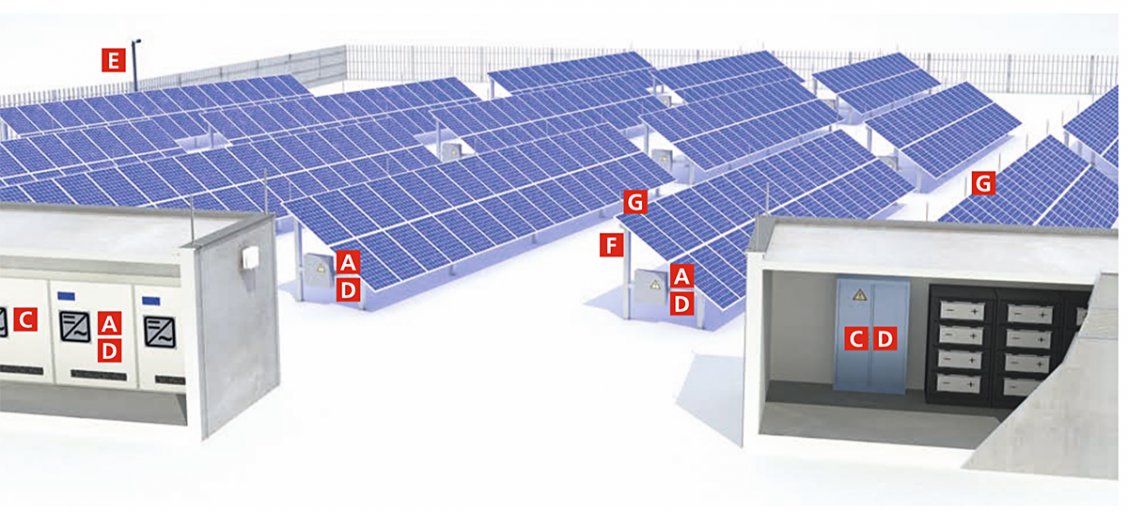Centralised configuration with central inverter
Extended d.c. cables are routed in the field in case of system concepts with central inverter technology. What has to be observed for the selection of surge protective devices (SPDs)?
In the event of a direct lightning strike to the PV array, the extended d.c. cables serve as an equipotential bonding conductor between the "local" earth potential of the PV array and the "remote" equipotential bonding surface of the in feed transformer/central inverter. Due to the partial lightning currents on the d.c. lines to be expected, type 1 arresters are used for protecting the electrical systems in PV power plants.
Normative regulations and notes: Supplement 5 to DIN EN 62305-3 provides information on the minimum discharge capacity of voltage-limiting or combined type 1 SPDs for a free field PV system in case of class of LPS III and a mesh size of the earth-termination system of 20 x 20 m. The values stated in this standard must be observed when selecting an adequate type 1 SPD for use on the d.c. side. |
Comprehensive protection of electronic components
Type 1 + type 2 combined arresters are installed at the d.c. input of the inverters and in the generator junction boxes. Moreover, a type 1 combined arrester is used to protect the central inverter on the a.c. side. The data interfaces are also protected by adequate surge arresters.
Protection against direct lightning strikes
Air-termination systems are used to protect the PV array of the operations building from direct lightning strikes. The air-termination rods are often mechanically fixed on the metal mounting structures where the modules are mounted.
Sample application:



